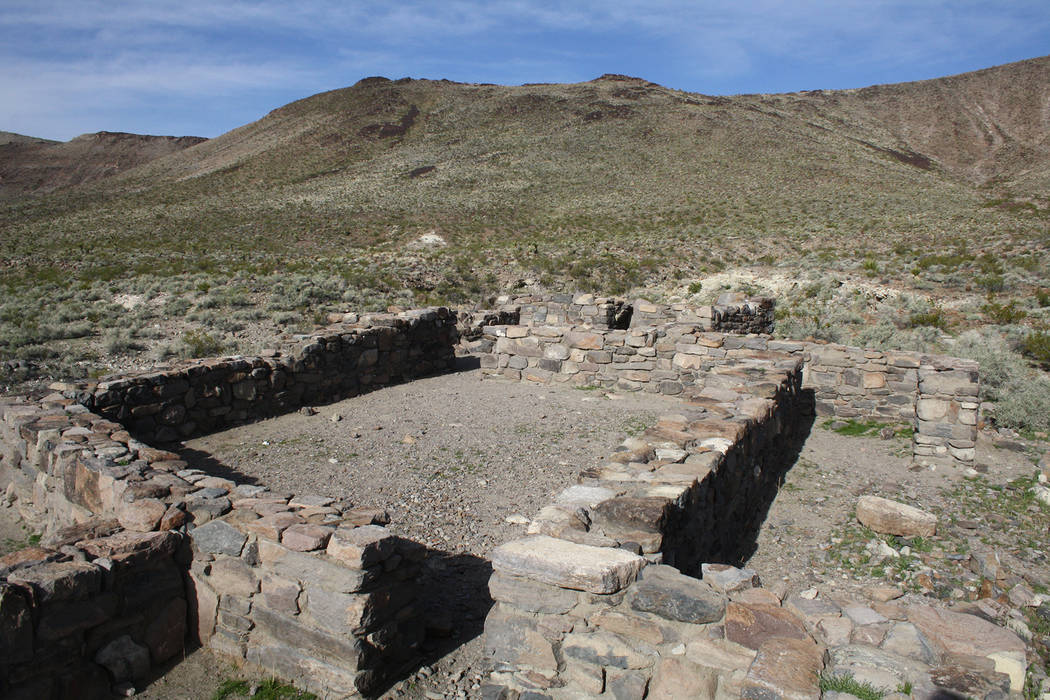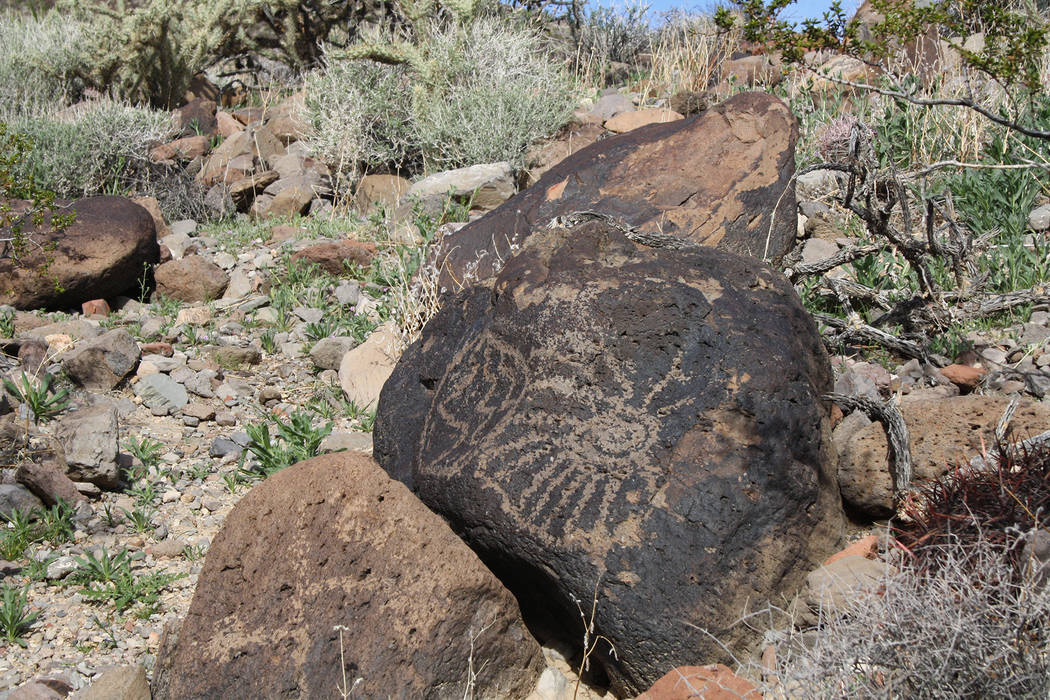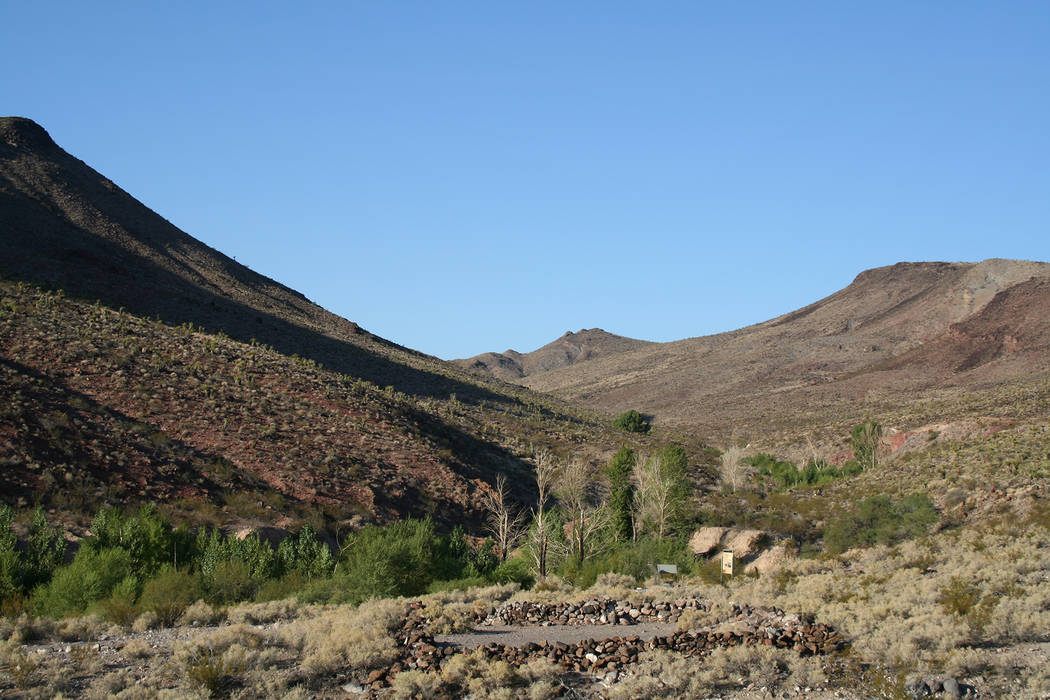Fort’s remains offer look into area’s past
Fort Piute, California, lies just outside Nevada’s southern tip, in the extreme eastern portion of the 1.6 million-acre Mojave National Preserve. Once you get there you’ll find not only the remains of an old military outpost, but also a tiny oasis around a perennial stream and American Indian petroglyphs.
You will need a four-wheel-drive vehicle, or at the very least, a high-clearance vehicle with good off-road tires to get there. Besides a rough gravel road, you may encounter deep sand. All access roads are subject to flash flooding, so postpone this trip if rain threatens.
Fort Piute was one of many stations built by the U.S. Army in the 1860s along the Mojave Road, the major travel route between Arizona and California. These manned posts were intended to assure safe passage of the U.S. mail and military supply wagons, and general protection of travelers. All the posts were built where there was perennial water, such as the spring-fed Piute Creek found here.
The buildings were constructed of the abundant local rocks. There were at least two buildings, one for horses and one for men. The largest structure was 60 feet long by 25 feet wide, and included rifle ports in the thick walls and deflecting shields inside each entrance so an enemy could not fire into the interior. Most of the structure is gone now, but you can still get a pretty clear picture of how it must have looked and how it commanded the all-important watering place.
Administratively, Fort Piute was not a separate command but treated as an outpost of Fort Mojave, a few miles to the east on the Colorado River. This fort was most likely occupied by no more than 18 men at any one time. It was in active use only for a few months as the route of the Mojave Road was moved south of here.
After you stroll around the remains be sure to explore down by Piute Creek. You’ll find cottonwood trees, willow and mesquite. With riparian vegetation and perennial water available, many birds call this area home, including red-tailed hawks, golden eagles and phainopeplas. The surrounding landscape supports barrel and beavertail cactus and yucca.
Look closely at the nearby boulders that are covered with desert varnish, and you will find American Indian petroglyphs carved into them. Long before the fort was built this area was used by the Paiute, Mojave and Chemehuevi peoples.
The fort is at an elevation of 2,773 feet, so temperatures will be only a little cooler than in the Las Vegas area.
Many of Deborah Wall’s columns have been compiled into books about hiking in the Southwest. She is also the author of “Great Hikes, a Cerca Country Guide” and a co-author of the book “Access For All, Seeing the Southwest With Limited Mobility.” Wall can be reached at Deborabus@aol.com.
Directions
From Boulder City take U.S. HIghway 95 south and follow for about 55 miles. Drive on past the Route 163/Laughlin turnoff and you will cross over into California. Drive 6.5 miles from the border (to mile marker 75) and go right onto a gravel road. Follow this for 7.1 miles and go right onto the powerline road. Drive 1.3 miles and go left onto a gravel spur road and follow for 1.7 miles to a parking area.


















